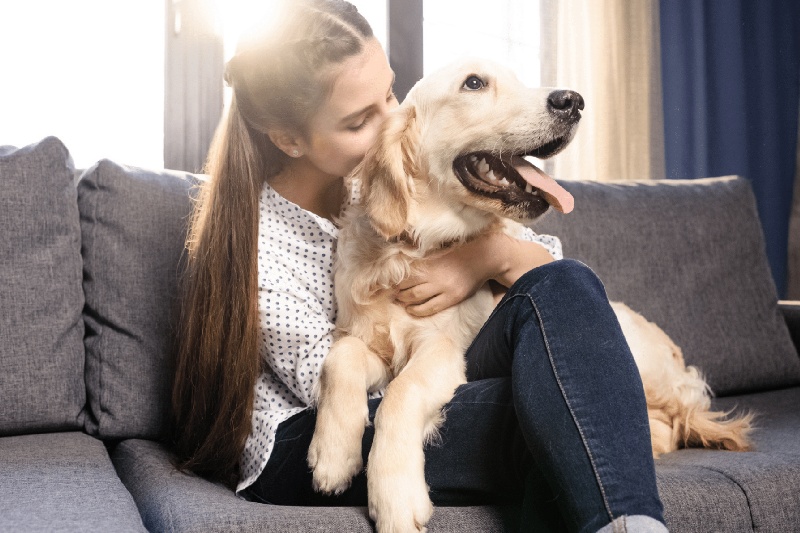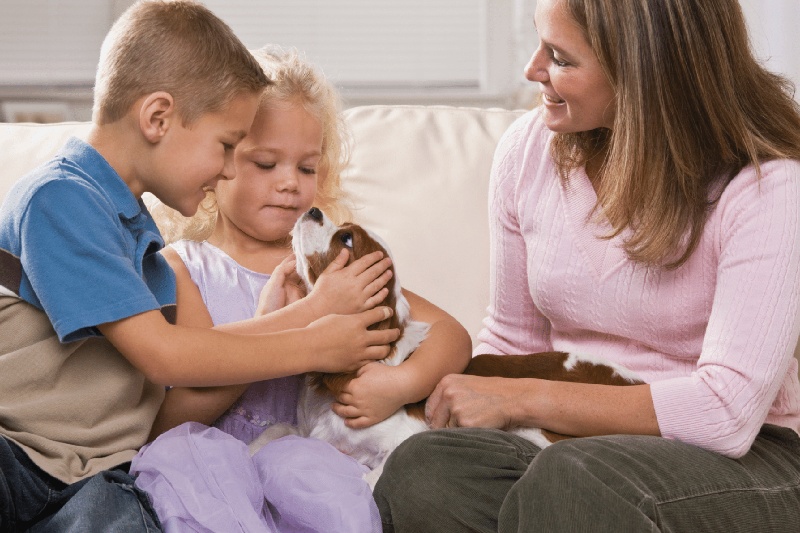As pet parents, our dogs mean the world to us, and we automatically go into overdrive to protect them when any health issue arises. One such serious issue is that of canine blindness. A blind dog may be born with the condition while others develop it over time as a result of old age or perhaps a specific medical problem. Whatever the reason, it is a condition that requires immediate and careful attention, and dog owners should be armed with the necessary tools to provide the best care possible for their blind pet.
Whether your pet is experiencing loss of sight, or you have decided to rescue a dog with some form of blindness, this article should help.
Read on to find out the causes and signs of blindness in dogs, as well as our top tips on how best to care for your visually impaired pet at home.
What causes blindness in dogs
Much like humans, dogs that experience blindness or some degree of vision loss do so for a variety of reasons. While it can be caused by a hereditary condition, their breed or as a result of injury or trauma to the eye, it is commonly attributed to ageing and medical conditions and disorders.
Such diseases include glaucoma, diabetes mellitus, cataracts, Progressive Retinal Atrophy (PRA), and Sudden Acquired Retinal Degeneration Syndrome (SARDS). The latter is an incredibly serious condition, due to its severity, extremely fast progression and the fact that there is no known cure.
The warning signs of canine blindness
There are certain behavioural and physical red flags that can alert you to the fact your dog may be experiencing loss of vision.
In terms of how your pet’s behaviour may differ, you might notice that they don’t make eye contact with you, or that the prospect of playtime in the garden or a walk in the woods isn’t met with the usual deranged excitement you’ve become accustomed to.
They may also be slower and clumsier when moving around the house or visiting new places, showing a reluctance to climb stairs or bumping into furniture quite often.
The noticeable physical signs of blindness or vision loss include:
- Red, swollen eyes
- White spots on the eyes
- Cloudy eyes
- Pawing at the eyes (a sign of irritation)
If you feel that your dog is displaying any of these signs or symptoms, it’s vital to consult your vet immediately.
Caring for a blind dog at home
If your fears are realised and a form of visual impairment is diagnosed, it is undoubtedly heartbreaking, but not a cause for panic. Dogs are adaptable and thankfully, there are simple measures that can be put in place to ensure your dog continues to live a happy and fulfilled life as a beloved part of your family.
Here is a selection of top tips to help you create and maintain a safe, familiar environment at home for your dog.
1. Avoid rearranging the furniture
A dog with a visual impairment relies on familiar pathways throughout the house to aid them in going about their daily business with ease. If you begin to move furniture around – even something as simple as changing the position of a coffee table – it can cause confusion and disorientation as they attempt to figure out where they may have gone wrong.
The same can be said for adding furniture or textiles to your home, such as a rug on a wooden or tiled floor. A blind dog will be incredibly sensitive to textures, so if their paws touch a new surface in what should be a familiar-feeling environment, it will take them some time to re-route and move past the obstacle in question.
2. Alert any house visitors to their condition
Friends or family paying a visit to your home will undoubtedly have the urge to pet or scoop up your prized pooch and shower them with affection. However, for a dog with vision loss, this can be a scary prospect as they might be caught off-guard, unaware that the well-meaning visitor is about to reach for them.
Explain to any callers that they will need to call the dog’s name before touching them, announcing their presence and ensuring your pet is aware that they are in the room and close by.
3. Explain your dog’s condition to young children
It’s also important to make sure that any young children in your family have a good understanding of the additional needs of your blind dog. This means limiting sudden shouting and screaming, making the dog aware when they want to approach for a cuddle, and tidying away any toys or objects that could prove hazardous to your pet.
4. Keep your pet’s food bowls in the same place
Ensure your pet is well fed and watered by keeping their food and water bowls in the same area at all times. Moving them will completely throw your dog off course and could lead to them enduring spells of hunger and thirst as they attempt to find the new feeding zone.
5. Make your presence known around the house
While sudden, loud noises or actions are a no-no, it’s important to maintain a certain level of frequent noise as you travel through the house, so that your pet knows your whereabouts and you avoid startling them. Humming a song, talking to your pet, and even taking loud footsteps while moving around your home will trigger your pup’s other heightened senses, providing a source of comfort but also alerting them when you are close by.
6. Combat tension and stress with natural dietary supplements
Dealing with the loss of vision, especially in cases when the condition comes on suddenly and deteriorates quickly, can be a huge source of stress and anxiety for your pet. Promote a sense of calm and help your dog to adjust to life without sight by integrating VetIQ Serene-UM Calming Tablets into their regular diet. Containing a specially formulated blend of essential amino acids, vitamins and minerals, these supplements have been recommended by veterinarians to combat tension and stress in pets, without having a sedative effect.
The takeaway
Coping with the loss or impairment of a dog’s sight is a difficult process for all involved.
But by putting certain measures in place to create a comfortable, stress-free and loving environment at home, you will succeed in maintaining the best quality of life possible for your much-loved pet.







